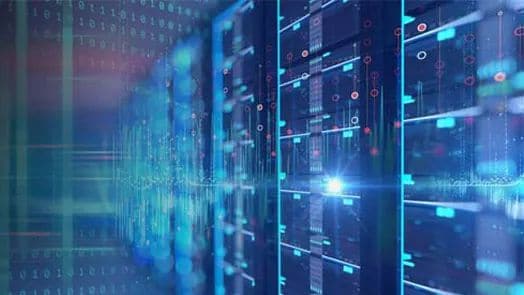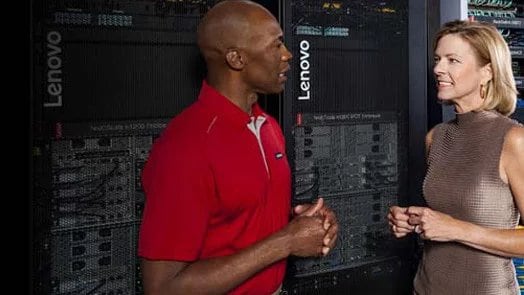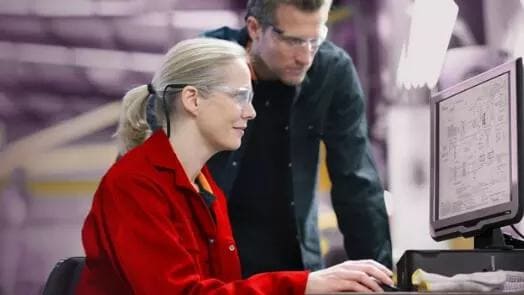Back to School Sneak Peek! Save up to {savingPercent} on laptops & accessories! Plus, free shipping sitewide. Shop Now >
Shopping for a business? New Lenovo Pro members get $100 off first order of $1,000+, exclusive savings & 1:1 tech support. Learn More >
My Lenovo Rewards! Earn 3%-9% in rewards and get free expedited delivery on select products. Join For Free >
Business Financing Available. Split payments from 4 to 52 weeks, options as low as 0% interest. See Details >
Free shipping sitewide, no minimum.

Edge Computing
Data center-like computing at the edge, the flexible way to power your innovation
Solving real-world challenges requires robust infrastructure solutions that generate faster insights. Allowing users to make complex decisions quickly, and with a higher level of confidence.Overview
Powerful computing, when and where it’s needed
IT is no longer confined to standalone data centers. It’s distributed across a mix of on-premises servers, public cloud, and an increasing share of infrastructure at the edge.
Most analysts predict edge computing to be the fastest growing segment in the industry, with IDC predicting that 50% of new enterprise IT infrastructure will be at the edge by 2023.
One of the most significant opportunities for IT decision-makers is deciding how to harness their data from edge to cloud. This challenge is a shift from the classic data center architecture to a data-centric environment—essentially, bringing the computing to the data vs. the data to the computing.
Lenovo's ThinkEdge portfolio has purpose-built devices designed to be networked on-premises. Or embedded in solutions, to give you the advantage in performance, security, and scalability.
Benefits
Our edge servers are rugged and secure with physical tamper-proofing, data encryption, and the ability to withstand conditions of all kinds. So no matter what you need, we’ll find the right solution for you.

A hybrid multi-cloud brings flexibility


Improve data management and access
Products
Customer Success Stories
Learn how implementing our edge-to-cloud solutions, helped customers across the globe, do business better.

Addfor

The Edge Company

Smart City of Barcelona
Resources

Lenovo-NVIDIA Edge AI

Real-time AI performance. Real-time insights.

Lenovo Open Cloud Automation for Red Hat OpenShift
LOC-A enables simplified Red Hat OpenShift® auto-deployment based on pre-defined HW configurations and deployment workflows.

Accelerate to accumulate
Services

TruScale Infrastructure Services

Professional Services

Support Services

Managed Services
Need more information?
Fill out this form so a Lenovo representative can contact you.
Edge Computing
Edge computing is a new way of processing data that is growing in popularity. Rather than sending data to the cloud to be processed, edge computing uses devices that are located nearer to the data source. This can be useful in situations where real-time processing is required or when there is a need to reduce latency. In addition, edge computing can help to save on bandwidth costs and improve security. As more and more companies look for ways to reduce their reliance on the cloud, edge computing is likely to become increasingly important.
At Lenovo, you can find the best edge computing products to meet your needs. Lenovo ThinkEdge and ThinkSystem series are among the best computers to underpin edge computing. Thus, if you're on the hunt for edge computing, Lenovo is the right place to shop.
Why is Edge Computing Important?
In a nutshell, the edge computing definition is a way of processing data closer to the source of that data. This is in contrast to traditional methods of data processing, which involve sending data to a central location (usually a server) for processing.
So why is edge computing so important? In short, it offers a number of advantages over traditional methods of data processing. As the world becomes increasingly connected, edge computing is likely to become even more important, as it provides a way to process data more efficiently and securely.
For one thing, it can help to reduce bandwidth costs, as less data needs to be sent back and forth between the edge device and the central server. It can also help to improve latency, as data does not need to travel as far to be processed. And in some cases, edge computing can even help to improve security, as sensitive data can be processed locally rather than being sent to a central location where it could be more vulnerable to attack.
How does Edge Computing Work?
Edge computing is a new buzzword in the tech industry, but what is it and how does it work? Edge computing is a way to process data closer to where it's being created, rather than sending it to a central location. This can be done either by using edge devices that are connected to the internet or by storing data locally on devices that are not connected to the internet. One example of edge computing is when you use your smartphone to take a photo. The photo is processed on the phone itself, rather than being sent to a server somewhere else. This means that edge computing can help to reduce latency and improve performance. Another example of edge computing is when you use a smart speaker to play music. The music is streamed from the cloud, but edge computing is used to process your voice commands and control the speaker. Edge computing can also be used in more industrial applications, such as reducing network congestion in factories or monitoring environmental conditions in real-time. As you can see, edge computing has a lot of potential applications. It remains to be seen how widely it will be adopted, but it's definitely an exciting new technology to keep an eye on.
Lenovo Devices for Edge Computing
Lenovo products have a number of features that make them a good choice for customers who need edge computing devices. ThinkEdge is a data processing and storage solution that is designed for edge computing environments. ThinkSystem is a server that is also designed for edge computing environments. These two products are a good choice for customers who need to process data at the edge of their network. Lenovo also has a number of other products that are suitable for edge computing, such as the ThinkPad Carbon and the ThinkPad T series. These products are a good choice for customers who need to be able to access their data and applications from anywhere. Lenovo also offers a number of services that can help customers to deploy and manage their edge computing devices. These services include support for installation, configuration, and maintenance. Lenovo also offers training for customers who need to be able to use their devices effectively.
Differences between Edge Computing Vs. Cloud Computing - Which One’s Better?
Edge computing and cloud computing are two terms that are often used interchangeably, but there are actually some significant differences between the two.
Edge computing refers to the process of storing and processing data closer to the source of that data, while cloud computing involves storing and processing data remotely, typically in a centralized location. Each approach has its own advantages and disadvantages.
Edge computing can be beneficial because it can help to reduce latency or the amount of time it takes for data to be transmitted from one point to another. This is because data doesn't have to travel as far when it's stored and processed at the edge. Edge computing can also be more secure than cloud computing because data isn't transmitted over the internet and there's less risk of it being intercepted or hacked. However, edge computing can be more expensive because it requires more hardware, and it can be less reliable because if the edge device fails, the data is lost.
Cloud computing, on the other hand, is generally more scalable and flexible than edge computing. It's also typically more affordable because you don't need to invest in as much hardware. However, cloud computing services can be less secure than edge computing because data is transmitted over the internet, and there's a greater risk of it being intercepted or hacked. In addition, cloud computing can be slower than edge computing because of the increased distance that data has to travel.
So, which approach is better? It depends on your specific needs and requirements. If you need low latency and high security, edge computing may be a good option. If you need scalability and flexibility, cloud computing may be a better choice. Ultimately, it's up to you to decide which approach is best for your needs.
Edge Computing Benefits, Services, and Applications
Edge computing is a type of computing that brings data storage and computation closer to the user or the edge of the network. The term edge computing is often used interchangeably with edge networking and edge devices.
Benefits of edge computing can be abridged as reducing latency, improving security, and conserving bandwidth. Edge computing applications include content delivery networks (CDNs), Internet of Things (IoT) devices, edge servers, and edge routers.
Common edge computing services include content delivery networks (CDNs), Internet of Things (IoT) management platforms, data services, and security services. CDNs are used to deliver content from the edge of the network closer to the user. IoT management platforms help manage and monitor IoT devices. Data services provide data storage and analysis at the edge of the network. Security services help protect data at the edge of the network.
Edge computing is an important part of many different industries including telecommunications, automotive, healthcare, retail, transportation, and manufacturing. Many companies are investing in edge computing to improve their operations and better meet the needs of their customers.
Edge Computing Challenges and Opportunities
Edge computing is a hot topic in the tech world right now. And for good reason - edge computing has the potential to revolutionize the way we use and interact with data. But edge computing solutions also come with their own set of challenges. For one, edge computing requires a significant amount of infrastructure - both in terms of hardware and software. This can be a costly undertaking for businesses and organizations. Additionally, edge computing can be complex to manage and deploy. There are also security and privacy concerns that need to be considered.
Despite these challenges, edge computing presents a number of exciting opportunities. Edge computing can help us to process and act on data in real-time, making it possible to create new applications and services that were not previously possible. Edge computing also has the potential to improve efficiency and reduce costs by reducing reliance on centralized data centers. As edge computing evolves, we will continue to see new challenges and opportunities emerge.
Final Thoughts
Edge Computing is a new type of computing that is designed to process data closer to where it is being generated. The main advantage of edge computing is that it can reduce latency and improve performance. Edge computing can also be used to process data in situations where there is no internet connection. For example, edge computing can be used in self-driving cars to process data from sensors in real-time. In the future, edge computing is likely to become more widely adopted as the Internet of Things (IoT) becomes more widespread.
Edge computing is a promising new technology that has the potential to revolutionize the way we use the internet. By bringing data processing and storage closer to the user, edge computing can help to reduce latency and improve performance. In addition, edge computing can help to ensure privacy and security by keeping sensitive data within the user's control. Lenovo devices are helping to lead the way as edge computing still continues to develop.


Edge Computing
Edge computing is a new way of processing data that is growing in popularity. Rather than sending data to the cloud to be processed, edge computing uses devices that are located nearer to the data source. This can be useful in situations where real-time processing is required or when there is a need to reduce latency. In addition, edge computing can help to save on bandwidth costs and improve security. As more and more companies look for ways to reduce their reliance on the cloud, edge computing is likely to become increasingly important.
At Lenovo, you can find the best edge computing products to meet your needs. Lenovo ThinkEdge and ThinkSystem series are among the best computers to underpin edge computing. Thus, if you're on the hunt for edge computing, Lenovo is the right place to shop.
Why is Edge Computing Important?
In a nutshell, the edge computing definition is a way of processing data closer to the source of that data. This is in contrast to traditional methods of data processing, which involve sending data to a central location (usually a server) for processing.
So why is edge computing so important? In short, it offers a number of advantages over traditional methods of data processing. As the world becomes increasingly connected, edge computing is likely to become even more important, as it provides a way to process data more efficiently and securely.
For one thing, it can help to reduce bandwidth costs, as less data needs to be sent back and forth between the edge device and the central server. It can also help to improve latency, as data does not need to travel as far to be processed. And in some cases, edge computing can even help to improve security, as sensitive data can be processed locally rather than being sent to a central location where it could be more vulnerable to attack.
How does Edge Computing Work?
Edge computing is a new buzzword in the tech industry, but what is it and how does it work? Edge computing is a way to process data closer to where it's being created, rather than sending it to a central location. This can be done either by using edge devices that are connected to the internet or by storing data locally on devices that are not connected to the internet. One example of edge computing is when you use your smartphone to take a photo. The photo is processed on the phone itself, rather than being sent to a server somewhere else. This means that edge computing can help to reduce latency and improve performance. Another example of edge computing is when you use a smart speaker to play music. The music is streamed from the cloud, but edge computing is used to process your voice commands and control the speaker. Edge computing can also be used in more industrial applications, such as reducing network congestion in factories or monitoring environmental conditions in real-time. As you can see, edge computing has a lot of potential applications. It remains to be seen how widely it will be adopted, but it's definitely an exciting new technology to keep an eye on.
Lenovo Devices for Edge Computing
Lenovo products have a number of features that make them a good choice for customers who need edge computing devices. ThinkEdge is a data processing and storage solution that is designed for edge computing environments. ThinkSystem is a server that is also designed for edge computing environments. These two products are a good choice for customers who need to process data at the edge of their network. Lenovo also has a number of other products that are suitable for edge computing, such as the ThinkPad Carbon and the ThinkPad T series. These products are a good choice for customers who need to be able to access their data and applications from anywhere. Lenovo also offers a number of services that can help customers to deploy and manage their edge computing devices. These services include support for installation, configuration, and maintenance. Lenovo also offers training for customers who need to be able to use their devices effectively.
Differences between Edge Computing Vs. Cloud Computing - Which One’s Better?
Edge computing and cloud computing are two terms that are often used interchangeably, but there are actually some significant differences between the two.
Edge computing refers to the process of storing and processing data closer to the source of that data, while cloud computing involves storing and processing data remotely, typically in a centralized location. Each approach has its own advantages and disadvantages.
Edge computing can be beneficial because it can help to reduce latency or the amount of time it takes for data to be transmitted from one point to another. This is because data doesn't have to travel as far when it's stored and processed at the edge. Edge computing can also be more secure than cloud computing because data isn't transmitted over the internet and there's less risk of it being intercepted or hacked. However, edge computing can be more expensive because it requires more hardware, and it can be less reliable because if the edge device fails, the data is lost.
Cloud computing, on the other hand, is generally more scalable and flexible than edge computing. It's also typically more affordable because you don't need to invest in as much hardware. However, cloud computing services can be less secure than edge computing because data is transmitted over the internet, and there's a greater risk of it being intercepted or hacked. In addition, cloud computing can be slower than edge computing because of the increased distance that data has to travel.
So, which approach is better? It depends on your specific needs and requirements. If you need low latency and high security, edge computing may be a good option. If you need scalability and flexibility, cloud computing may be a better choice. Ultimately, it's up to you to decide which approach is best for your needs.
Edge Computing Benefits, Services, and Applications
Edge computing is a type of computing that brings data storage and computation closer to the user or the edge of the network. The term edge computing is often used interchangeably with edge networking and edge devices.
Benefits of edge computing can be abridged as reducing latency, improving security, and conserving bandwidth. Edge computing applications include content delivery networks (CDNs), Internet of Things (IoT) devices, edge servers, and edge routers.
Common edge computing services include content delivery networks (CDNs), Internet of Things (IoT) management platforms, data services, and security services. CDNs are used to deliver content from the edge of the network closer to the user. IoT management platforms help manage and monitor IoT devices. Data services provide data storage and analysis at the edge of the network. Security services help protect data at the edge of the network.
Edge computing is an important part of many different industries including telecommunications, automotive, healthcare, retail, transportation, and manufacturing. Many companies are investing in edge computing to improve their operations and better meet the needs of their customers.
Edge Computing Challenges and Opportunities
Edge computing is a hot topic in the tech world right now. And for good reason - edge computing has the potential to revolutionize the way we use and interact with data. But edge computing solutions also come with their own set of challenges. For one, edge computing requires a significant amount of infrastructure - both in terms of hardware and software. This can be a costly undertaking for businesses and organizations. Additionally, edge computing can be complex to manage and deploy. There are also security and privacy concerns that need to be considered.
Despite these challenges, edge computing presents a number of exciting opportunities. Edge computing can help us to process and act on data in real-time, making it possible to create new applications and services that were not previously possible. Edge computing also has the potential to improve efficiency and reduce costs by reducing reliance on centralized data centers. As edge computing evolves, we will continue to see new challenges and opportunities emerge.
Final Thoughts
Edge Computing is a new type of computing that is designed to process data closer to where it is being generated. The main advantage of edge computing is that it can reduce latency and improve performance. Edge computing can also be used to process data in situations where there is no internet connection. For example, edge computing can be used in self-driving cars to process data from sensors in real-time. In the future, edge computing is likely to become more widely adopted as the Internet of Things (IoT) becomes more widespread.
Edge computing is a promising new technology that has the potential to revolutionize the way we use the internet. By bringing data processing and storage closer to the user, edge computing can help to reduce latency and improve performance. In addition, edge computing can help to ensure privacy and security by keeping sensitive data within the user's control. Lenovo devices are helping to lead the way as edge computing still continues to develop.










